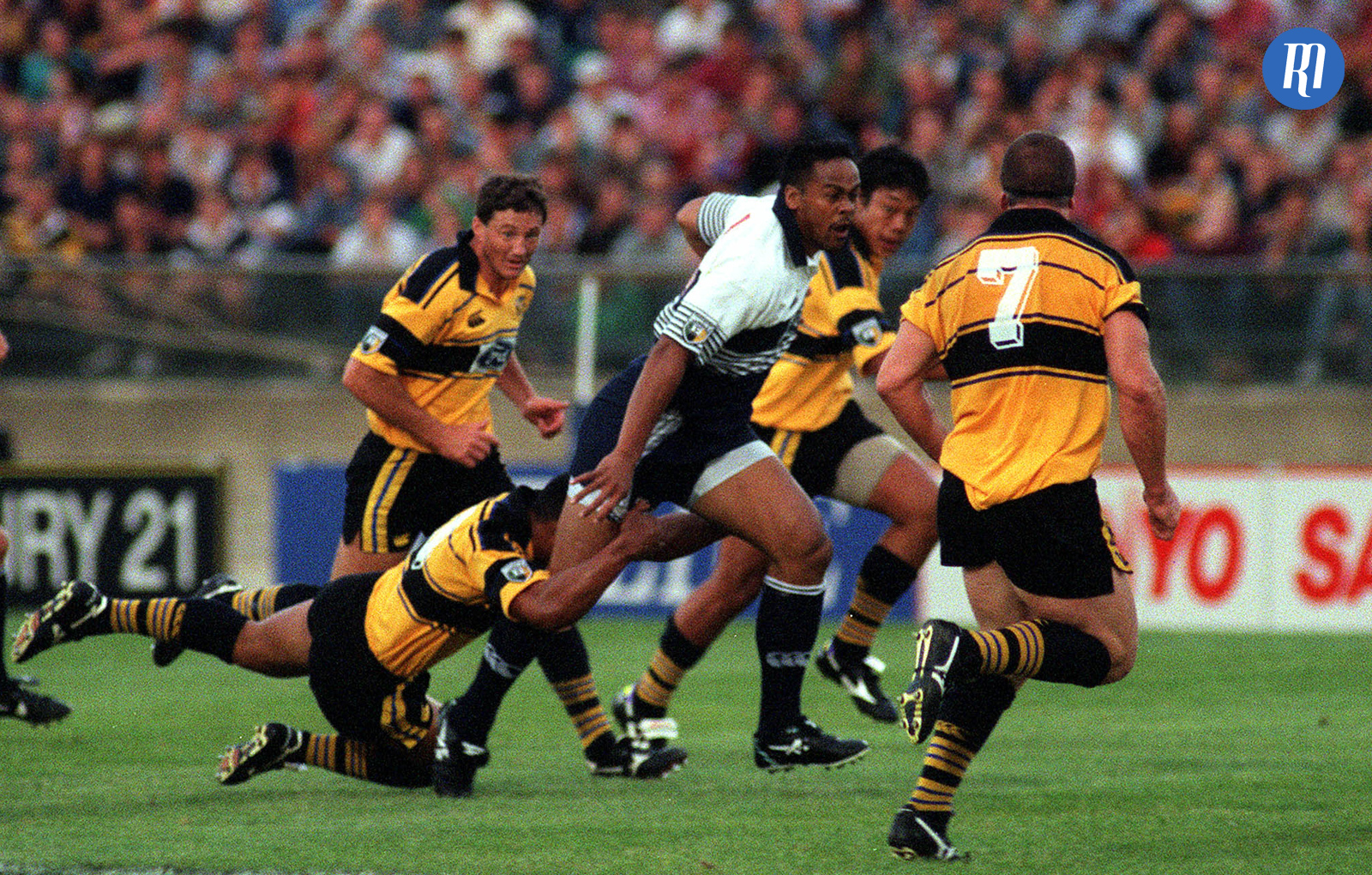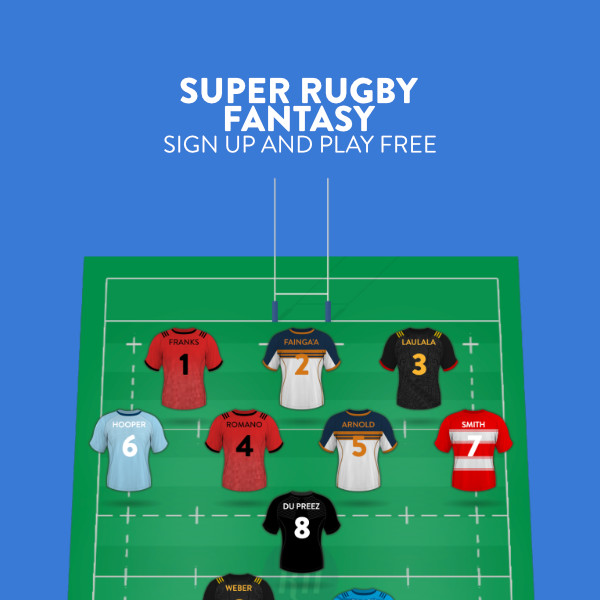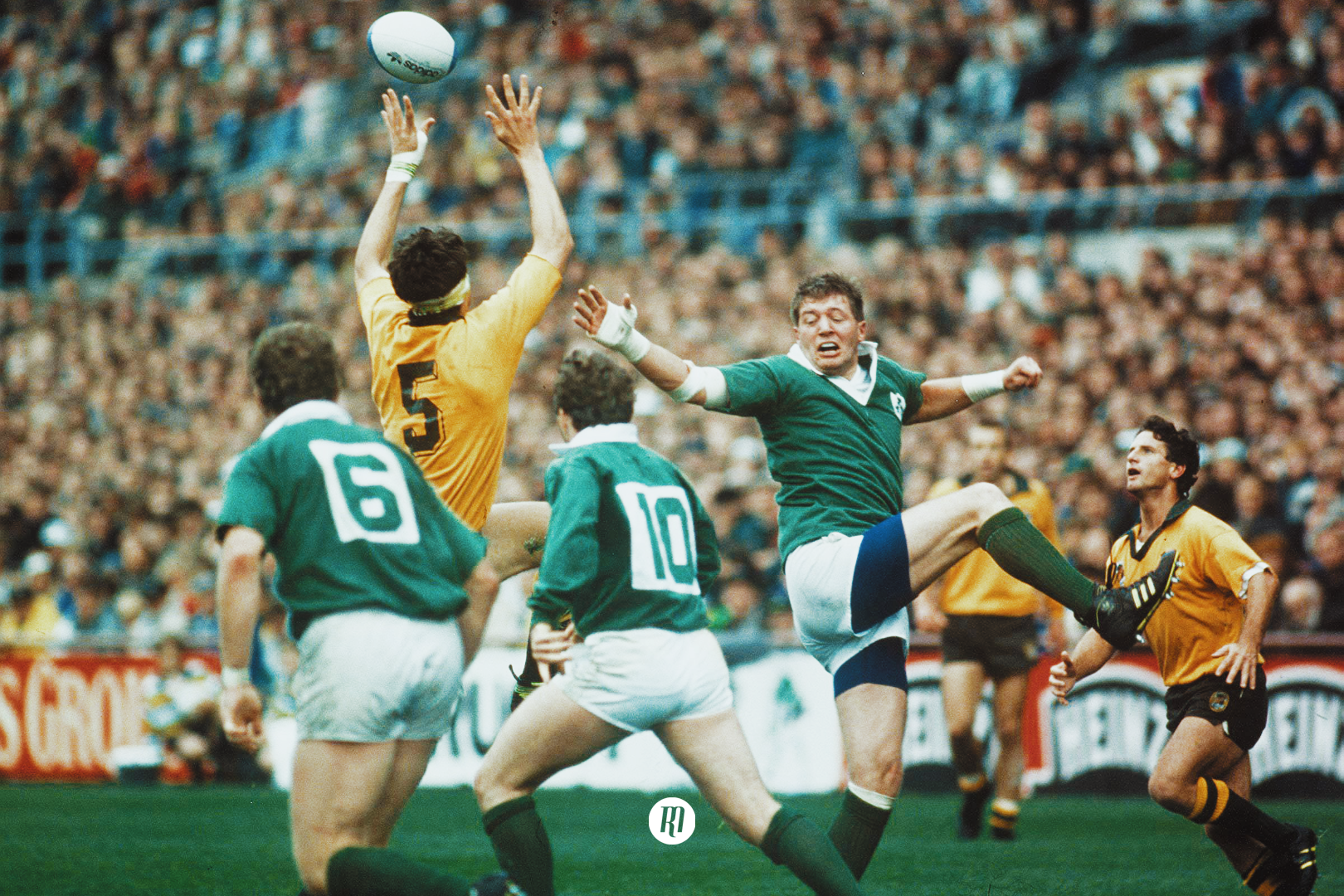From shamateurism to Super Rugby with a World Cup in between
Born in a cauldron of romance and turbulence, the first professional season of Super Rugby was a venture into a new and delicate world, one that might never have happened had events turned out differently.
How were the Springboks going to stop Jonah Lomu? That was the big question.
The man who had redefined the sport and burst to prominence through the 1995 World Cup in South Africa had become a superstar. The media were running out of superlatives, as well as ideas on what South Africa needed to do. A World Cup was at stake.
A try from Ruben Kruger and the boot of Joel Stransky had despatched France in a rain soaked semi-final in Durban, and left South Africa up against a New Zealand side that had faced little competition from England. A nonchalant drop-goal from Zinzan Brooke might have been the highlight had the emphatic Lomu not crossed the whitewash four times; and here is where the question arose; how were the Springboks going to stop Jonah Lomu?
The day before the final however, this question became far less significant.
In a joint press-conference between the chiefs of the South African, Australian and New Zealand rugby unions, it was announced that they had signed a US$550 million deal with Rupert Murdoch’s News Corporation. The money would be invested into an annual competition between the three nations, the Tri-Nations, and a provincial tournament, the Super 12 competition, which would expand the already existing Super 10 competition.
Rugby Union’s trajectory at the time was fast heading towards professionalism, despite the stubborn reluctance to embrace it in some quarters, and as with almost all major change in the sport to date, it was driven by the big Southern Hemisphere unions.
In 1994, the International Rugby Board (IRB) had set up a working party to explore the future of amateurism which, when it presented its findings in February of 1995, did nothing to suggest that rugby should remain an amateur sport. Indeed, it even went so far as to argue that if the game had come into being in the latter part of the 20th century, the amateur principles upon which it stood would be socially unacceptable and divisive.
In many respects, this was a tacit nod to the fact that those who championed a professional game before the sport split in 1895 were right.
If rugby were to flourish, the shackles of amateurism needed to be cast aside. However, the game did not take the plunge itself so much as it was forced. The seeds for change were blown from the same quarters that had led to their cessation in 1895.
Civil war had broken out in Rugby League at the same time as the IRB working party were presenting their findings, when News Corporation’s proposal to create a ‘Super League’ was vetoed by the Australian Rugby League authorities. Vast sums of money surged into either side of the battle, and while rugby union initially looked on with a wry smile, they soon realised that a great many of their players could be enticed to switch code; something had to be done.
So worried were the Australian and New Zealand union boards, that they declared on the 8th April that the only way to maintain the game of rugby union would be to approach News Corporation for their own deal. The deal was signed two days before the World Cup final.
The newly formed SANZAR (South African New Zealand Australian Rugby) were looking the wrong way though. Despite having secured the future of rugby in the Southern Hemisphere with their News Corporation deal, they had failed to secure the most valuable assets within the sport; the players.
Led by Geoff Levy and former Wallaby and IRB member Ross Turnbull, the World Rugby Corporation (WRC) was backed by Kerry Packer, whose World Series Cricket competition still has an influence on the sport even today. They secretly, and successfully, managed to sign up some 400 players to their vision of the future, 30 franchises across the globe in a worldwide league. To this end, most of the leading World Cup squads had signed provisional contracts (with the exception of England and Ireland).
Rugby was again at a cross-roads.
Mike Brewer, All Black flanker in the 1995 final, was noted as saying to Rob Fisher of the New Zealand Rugby Union, ‘I hope you enjoy the last meeting of the IRB.’
Players were pulled one way and the other with offer and counter-offer, but in the end, it was the established order that won through. While one should undoubtably believe it was because of the shared history and the pride in wearing your national jersey that brought players back into the fold, it also probably had a lot to do with the fact that the WRC had promises, and the unions had the guaranteed money.
The threat the WRC posed had lost its legs by the middle of August, but the game as a whole remained on a precipice. The IRB went into a meeting in Paris on the 26th August 1995 on the future of the game with the outcome far from decided. That the New South Wales Rugby Union had declared amateurism dead in the game as far back as April, and that the newly formed SANZAR had signed such a momentous deal with Rupert Murdoch, seemed to matter little going into the meeting.
In the end, and like so many others through the history of rugby union, the IRB feared the loss of control of the sport, and decided not to fight against the rising tide, declaring on the same day of the meeting, the game of rugby union open.
A new dawn
As proponents of the change, and equally as the main motivators for the establishment of the World Cup so many years before, the Southern Hemisphere was well prepared, with many of its institutions possessing near professional structures already.
When the newly formed Super 12 and Tri-Nations competitions kicked off in 1996, they were well received.
Comprising five teams from New Zealand (Auckland Blues, Waikato Chiefs, Otago Highlanders, Wellington Hurricanes, Canterbury Crusaders), four from South Africa (Northern Transvaal, Natal Sharks, Transvaal, Western Province), and three from Australia (Queensland Reds and NSW Waratahs, joined by ACT Brumbies), the first season of Super Rugby was a huge success, and delivered in spades for its new television audience.
Open games that invited running rugby came with big score-lines and beautiful inconsistency. In the opening round, Transvaal were the only team not to push their score to double digits, and aside from their game against the Brumbies, each fixture contained over 40 points; some start.
While New Zealand and Australia had initially consolidated their individual unions into broader franchises, the route to Super Rugby for clubs in South Africa was through the Currie Cup, with the previous season’s semi-finalists representing the nation. This persisted through to 1998, with South Africa going into the 1999 iteration represented by the Stormers, Sharks, Cats and Bulls.
For Northern Transvaal and the Natal Sharks, it was a good season, making it into the playoffs, but Transvaal and Western Province finished the season at the bottom of the table, with only the Canterbury Crusaders below them.
By the time May had come around, the two South African sides were joined by the Queensland Reds and the Auckland Blues in the semi-finals. The two had finished the season tied at the head of the table, and while the Reds had won one more fixture than the Blues, they had failed to accumulate as many points in attack, and indeed as many try bonus points; perhaps something that would plague them in their semi-final as they went up against another free-scoring side in the Natal Sharks.
In a game attended by 42,000 at Eden Park, two tries from Jonah Lomu amongst eight from the Blues saw them overcome Northern Transvaal and progress to the inaugural Super Rugby final.
Coached by Graham Henry and captained by Zinzan Brooke, Auckland contained some of New Zealand’s greatest players which included Sean Fitzpatrick, Olo Brown, Craig Dowd, Robin Brooke, Michael Jones, and even featured a youthful Carlos Spencer; not forgetting the inimitable Jonah Lomu. Despite boasting the top two try scorers in the competition, Natal were up against it, not least because they had a question to answer; how were they going to stop Jonah Lomu?
While the early pressure came from Natal, the Blues took the first points after their first foray into the opposition half, and it wasn’t long before the first try of the game arrived.
Some great work from the forwards through the middle of the field and over the half-way line sucked in the Natal defence before the ball found its way to Jonah Lomu. Gliding effortlessly, he swerved inside as if to go over André Joubert before dropping his left shoulder and pressing towards the line, brushing the flailing Joubert off. Auckland were on their way.
Superb physicality in the contact area combined with efficient rucking and a high tempo was too much for Natal, and Auckland’s intensity was rewarded with another try from Andrew Blowers in the right hand corner.
From there, despite some token tries from the Natal Sharks, the game belonged to Auckland, winning by 45 points to 21; the first Super Rugby champions.
They would repeat this triumph in the second iteration of the competition, but it would be this inaugural season’s bottom placed team that would go on to dominate, with the Crusaders becoming the team to beat.
The South Africans stopped the mighty Jonah Lomu back in 1995 and lifted the famous Webb Ellis trophy, but not before rugby had been unceremoniously dumped into the modern age.

Filed under:
Super Rugby, Historical Series
Written by: Edward Kerr
Follow: @edwardrkerr · @therugbymag






